The squat is the single best exercise you can do, period. Whether you are using a barbell, dumbbells, kettlebells, a sandbag, no added weight at all or even your baby in a carrier, this exercise will strengthen, stretch and challenge many muscles in your body.
I’ve been coaching and training people for over a decade and I never get tired of doing squats or prescribing them to my clients because they just work.
Most of us spend way too much time on our butts, and the squat “fixes” all that is wrong with sitting too much. It activates and strengthens your entire posterior chain.
So, if you happen to be taking care of your baby and decide it’s time to get moving a bit but are unsure of which exercise you should do, just squat. Do 20, 50, 100 or even 300 of them if you’re feeling up to it. And if you’re feeling uninspired, I’ll give you some great workouts you can do at home with just a baby and a baby carrier.
Is it safe to exercise while babywearing?
Yes, it is safe to exercise while babywearing, but keep in mind that it’s only as safe as you make it. Every move you make should be with your baby in minds. Exercises should always be done slowly and in a controlled fashion.
If you have never attempted a certain exercise, don’t try it for the first time with your baby in the carrier. If you are unsure how a certain movement will feel, make sure you are holding onto something while doing it.
Make sure the carrier is properly installed, all buckles and straps are correctly closed, and the baby is comfortable (not too loose or too tight) in the carrier. Before starting your workout, try out every exercise first. Do each one slowly and safely. Check on your baby throughout the workout to make sure he’s still happy and comfy.
Finally, always beware of your baby’s extremities. The head and limbs are vulnerable to being pinched or getting stuck on you or something around you. So always make sure the area is clear and be constantly feeling for his arms and legs to ensure they are clear from danger.
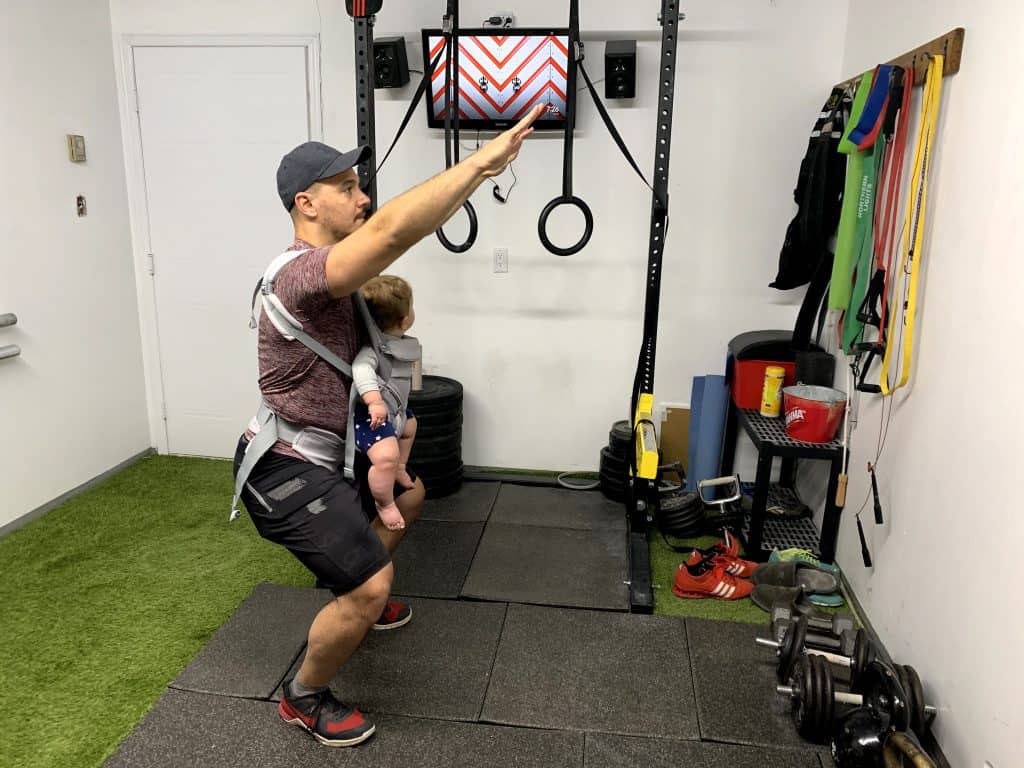
Squat technique
The squat is a beautiful movement. It’s natural. It’s human. We were made to squat.Right before babies start to walk, they begin to squat, and they do it beautifully. Here is my 8-month old son squatting before he could walk.
The basic techniques of the squat are the same whether you are babywearing or not.
- The feet are flat on the ground throughout the entire squat. They are spaced about shoulder width apart but it may vary from person to person. Your toes can be pointing straight forward or slightly towards the outside, whatever feels more comfortable to you.
- Your back and spine remain in a neutral position, meaning that you maintain your natural curvature throughout the squat. Avoid overextending or bending forward.
- The torso remains as vertical as possible. Beware of leaning over too much.
- The knees should track over your feet, don’t let them cave in. The focus should be on pushing them away from each other.
- Keep the weight of your body well distributed over your feet with the heels well planted on the ground
- Go as low as you can while keeping your form per the above points.
- To stand up, push off your heels and keep your knees from caving in.
How to squat while babywearing
If you’re squatting with a baby in the carrier, there are a few additional things to keep in mind. Here are some babywearing specific tips for the squat:
The Stance
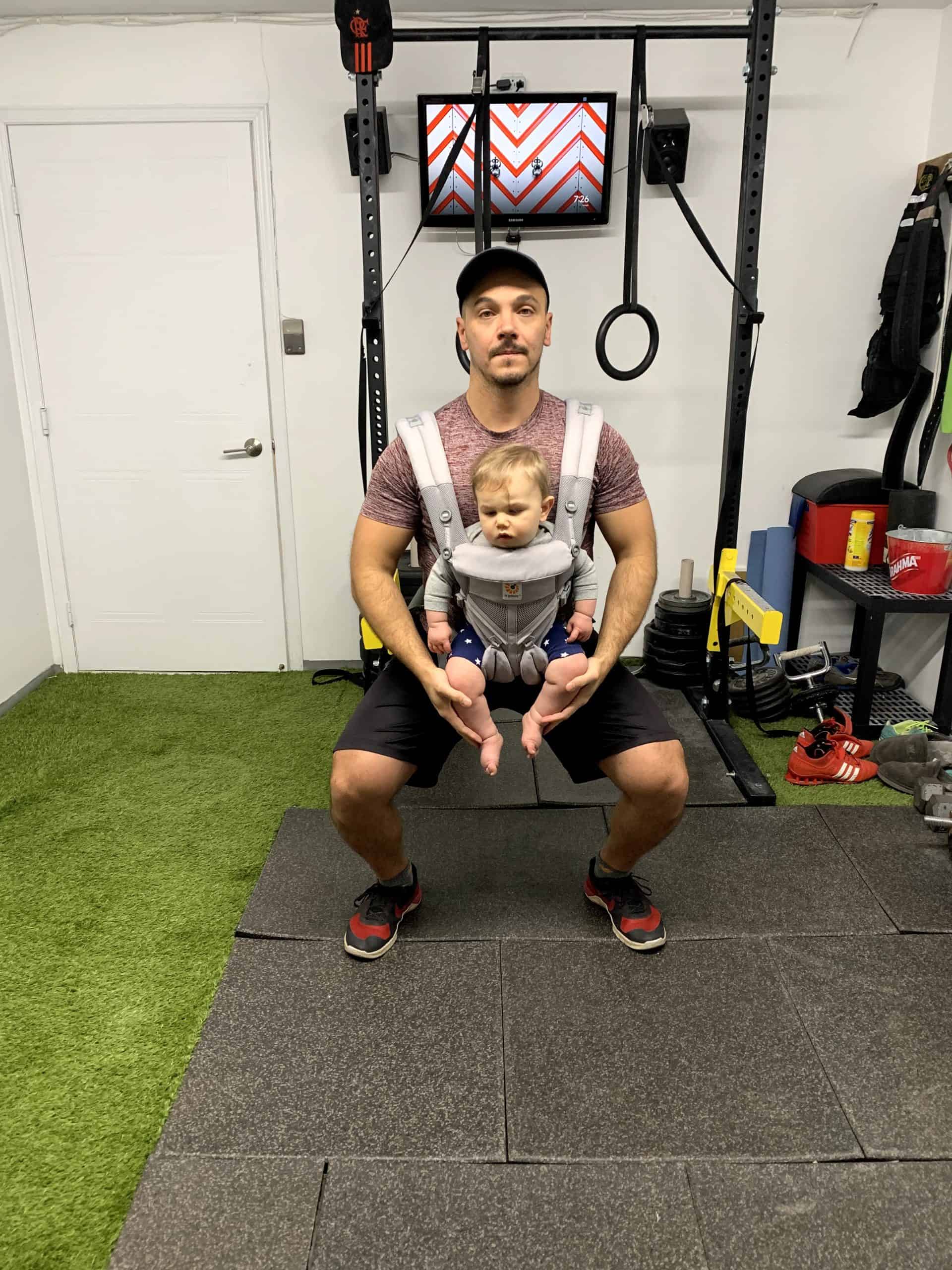
The usual suggestion for the squat is to stand with your feet about shoulder-width apart, although it can vary from person to person. When squatting with a baby carrier I like to take a stance that is slightly wider than normal.
The reason for this is that it allows for the baby’s feet and legs to slide inside my thighs. It creates more room for his limbs so they don’t get caught on my thighs and end up bending in any undesirable ways.
The Back
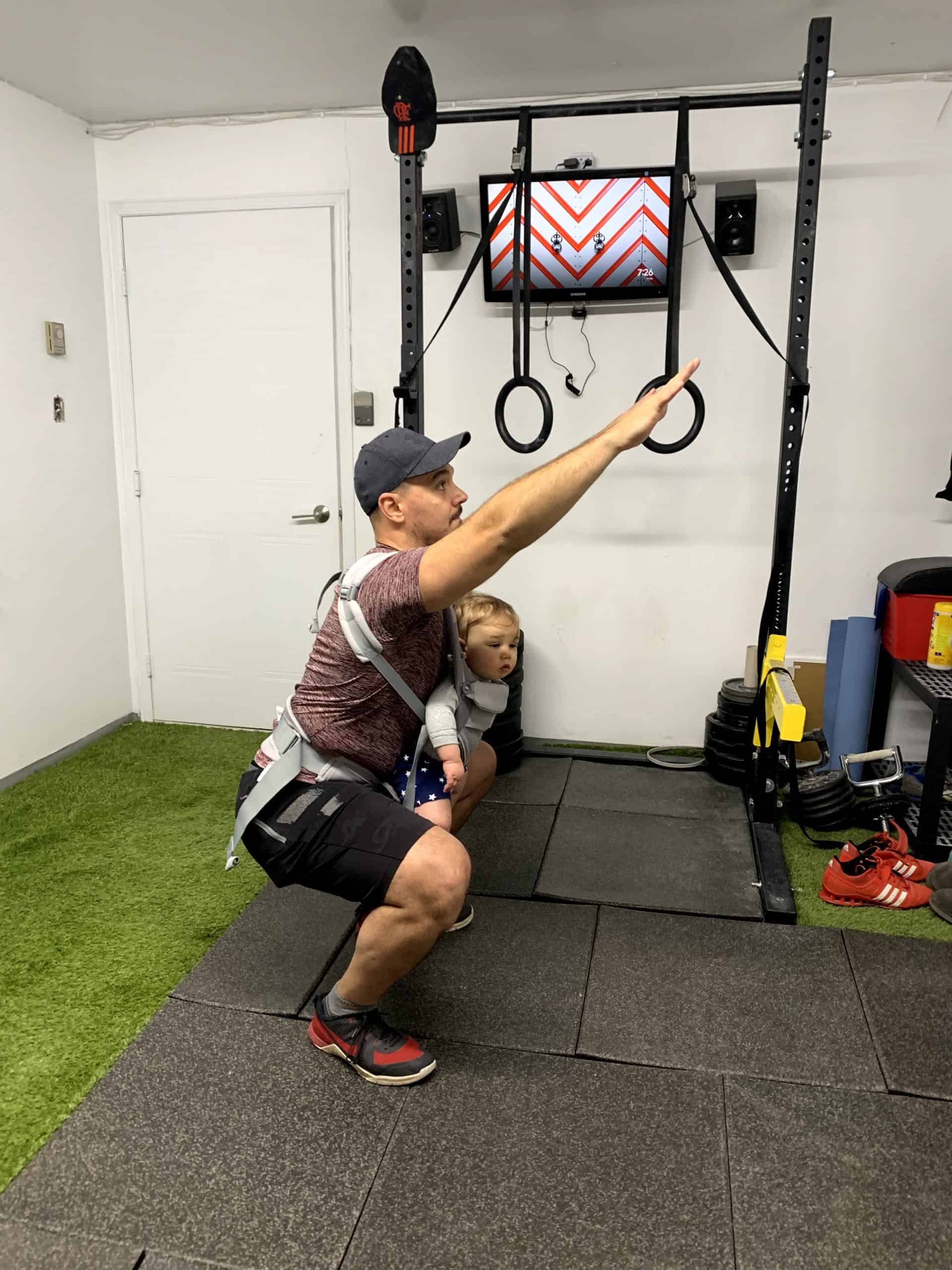
Maintaining the natural position of your spine is one of the most important parts of the squat, and even more vital when wearing a baby carrier. The baby carrier will pull you forward and down, so keeping a tight core and back throughout the movement is key.
Before squatting with a baby carrier I like to roll my shoulders back, tighten my core and lats, and raise my arms as I squat to force my torso into the best position possible.
The Knees
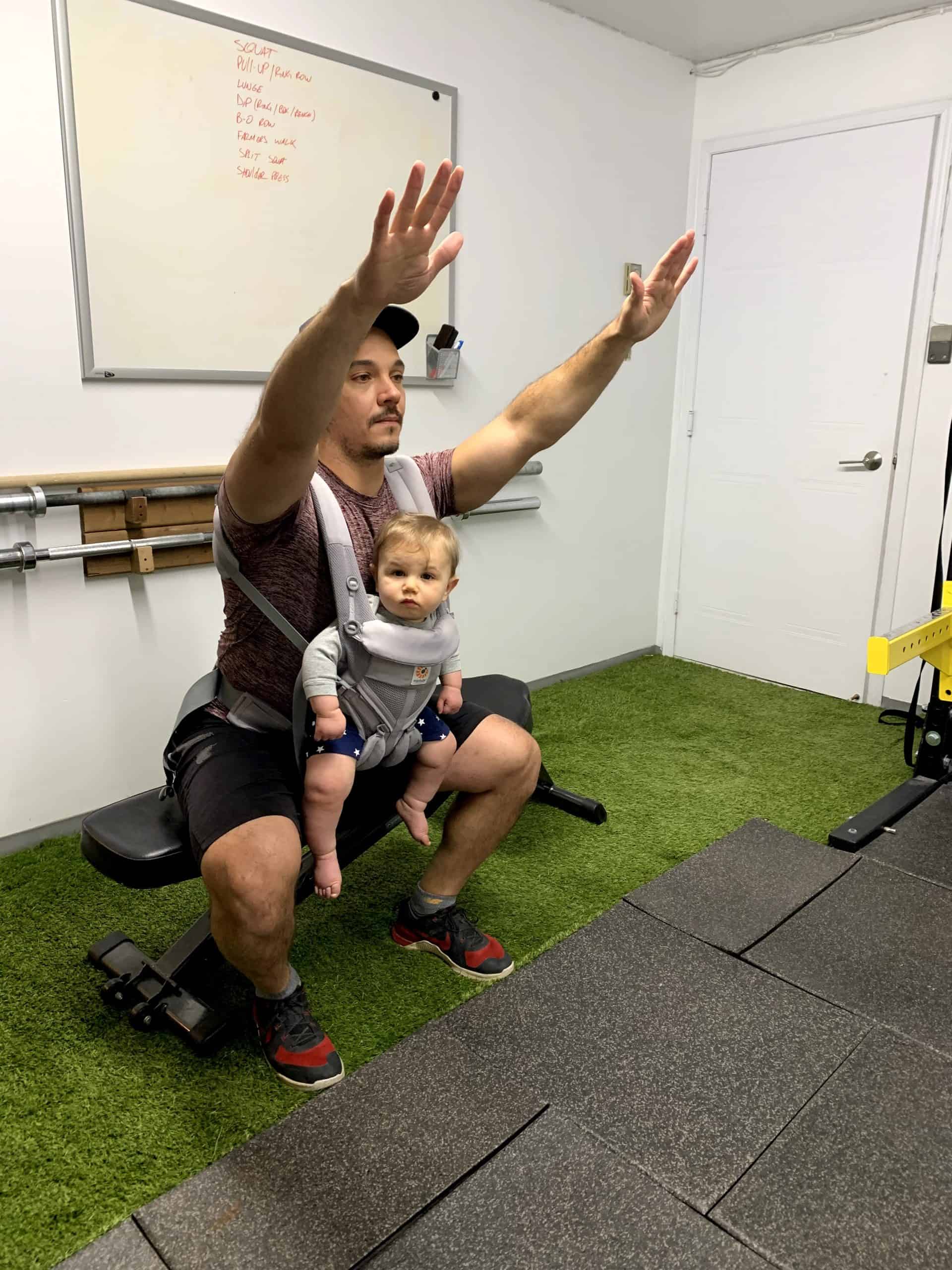
As with any type of squat, you should push your knees out (away from each other) while you squat. Try to keep them tracking over your feet and NOT towards each other. This is even more pronounced when babywearing. Opening up your knees, and therefore hips, during the squat opens up a pocket for your baby to slide into as you get lower into the squat.
How Low Should You Squat?
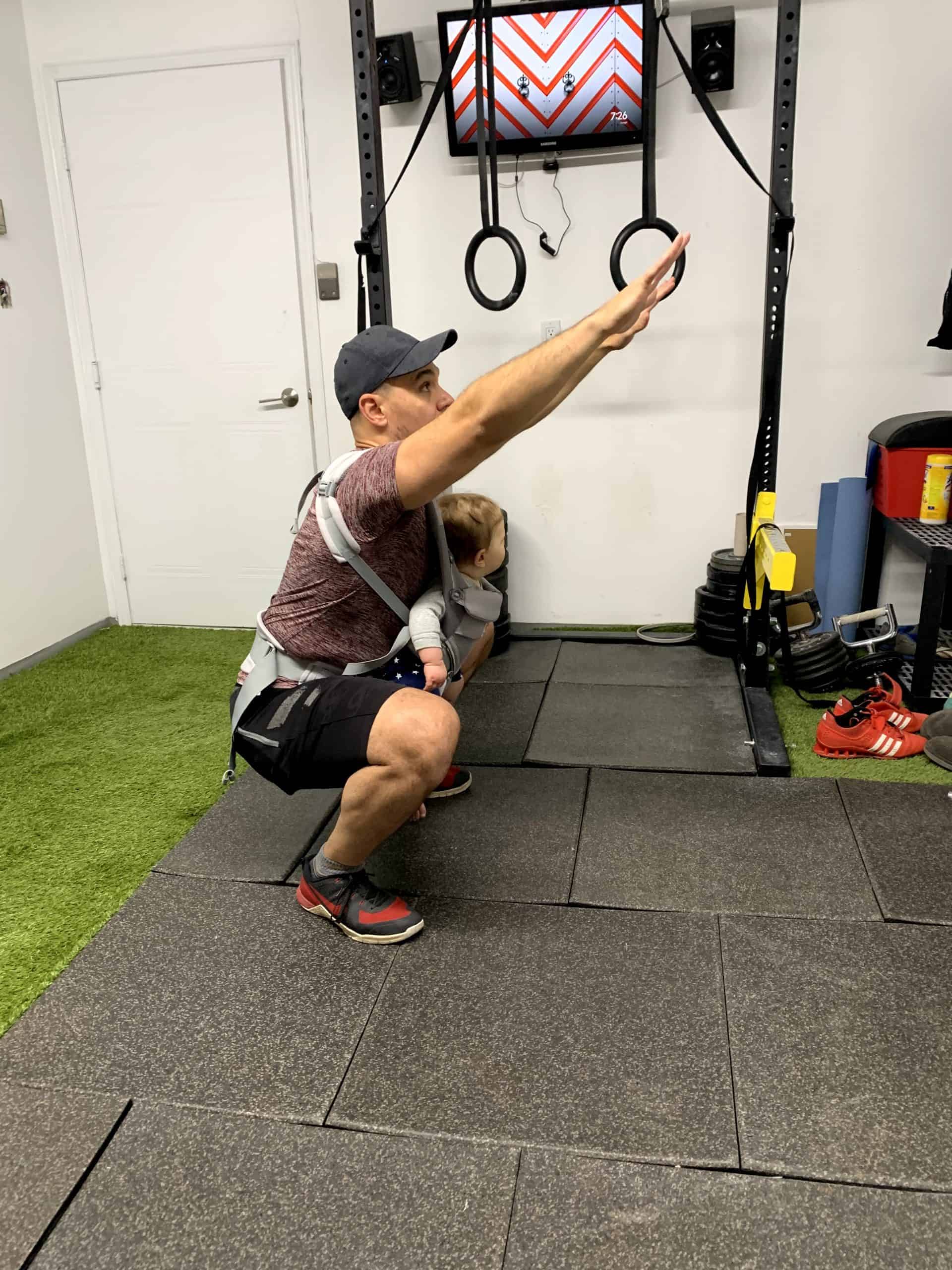
As low as you can while keeping all of the above point in mind AND while keeping you baby comfortable and safe. The baby’s airways should always be clear and all of his limbs should be free to move and not caught on anything.
If the carrier starts feeling a bit tight, don’t go any lower. Going as low as possible is no longer the priority when squatting with a baby carrier.
The Way Up
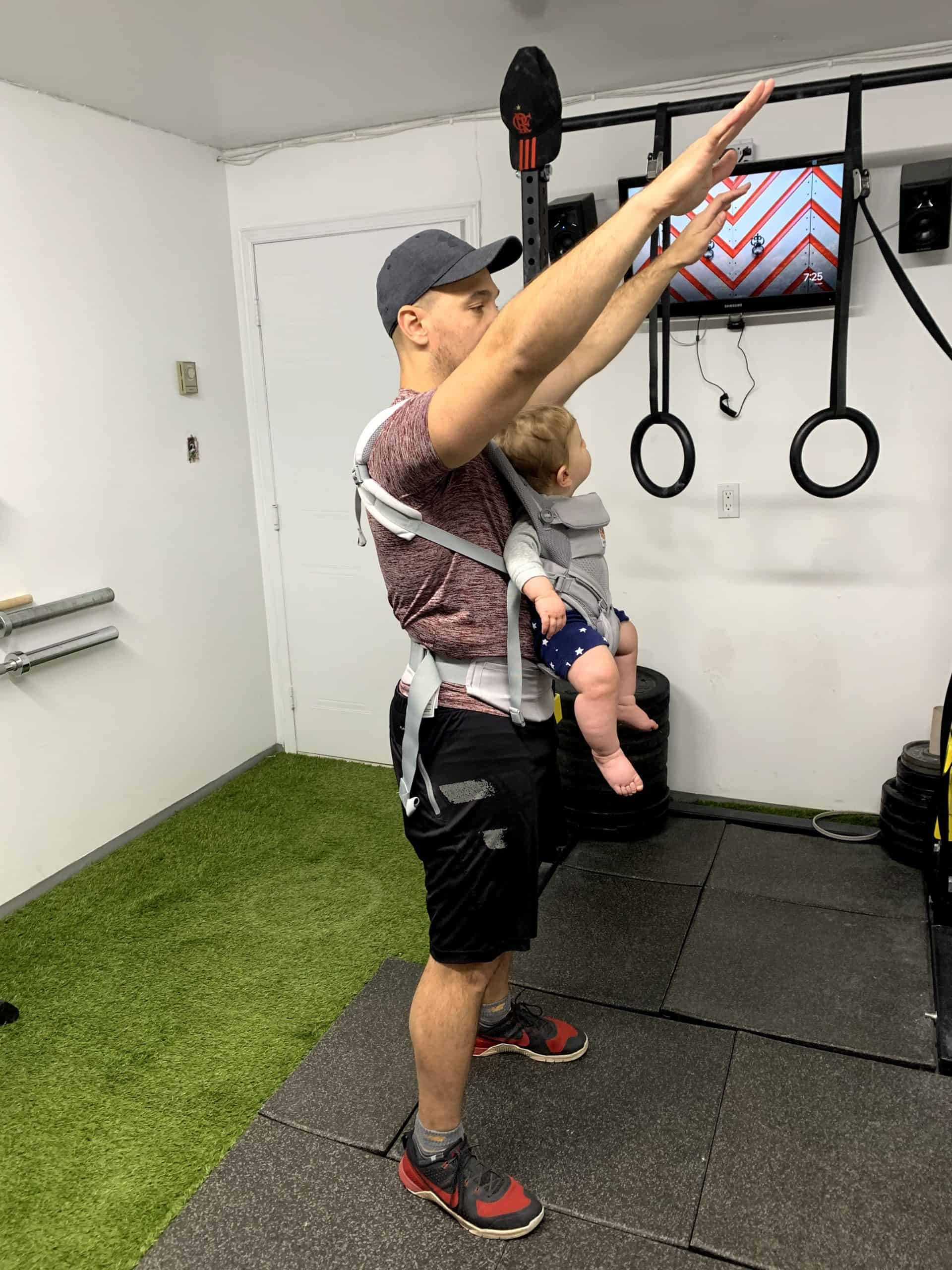
Maintain your form as you push through your heels and maintain your knees away from each other. I like to look up to the corner where the ceiling meets the wall in the room in order to keep my gaze upward and maintain a strong core and back.
Check out our video showing the babywearing squat technique in motion:
In short, when squatting while babywearing your priority is the safety and comfort of your baby along with maintaining good form with the added weight and balance challenges of the baby carrier.
How to scale down (modify) the squat for babywearing
Here are a few creative ways to modify the squat for safety and to allow for correct form while babywearing.
Reduce the range of motion
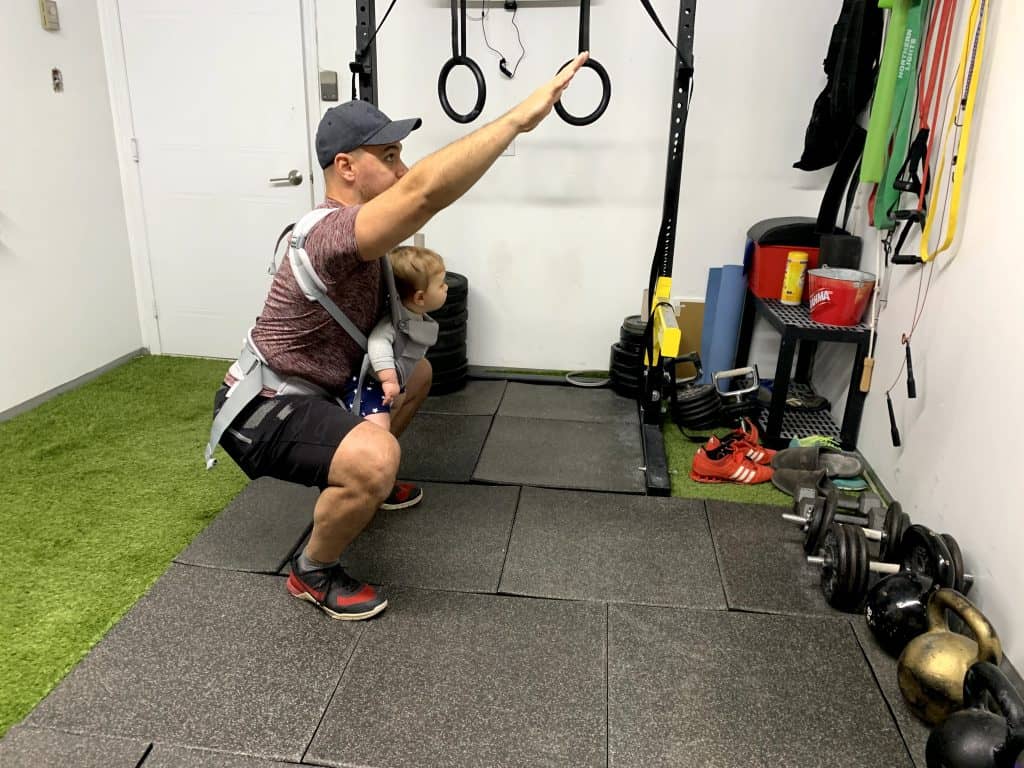
When babywearing, the depth of your squat is not the priority. If you feel that you are losing form (back is bending, heels coming up, leaning forward…) do not go any lower! Only squat to the depth where you can keep your form perfect and your baby comfy.
Use a chair, couch or box for depth
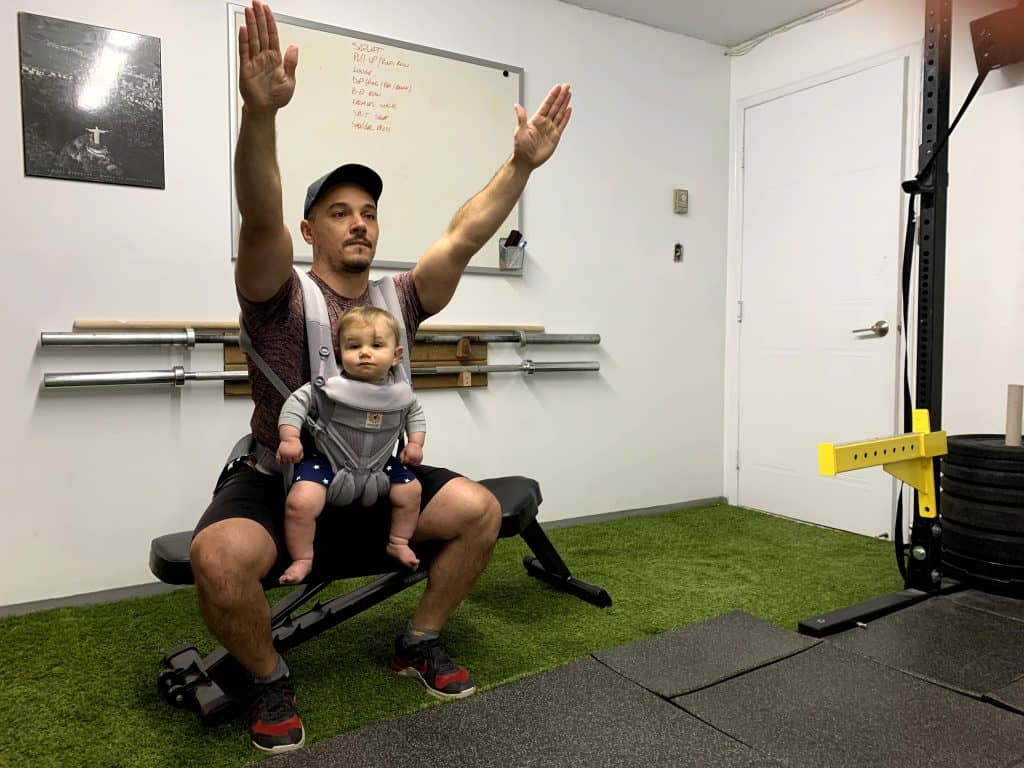
If you feel unstable as you go down into a squat, you can use a chair, couch, bench or box as a squatting target. I suggest that you avoid actually sitting down. Instead just touch the chair and come back up. This makes sure that you are never losing tension in your body and give you confidence that you can stop and sit if needed.
Hold onto something solid
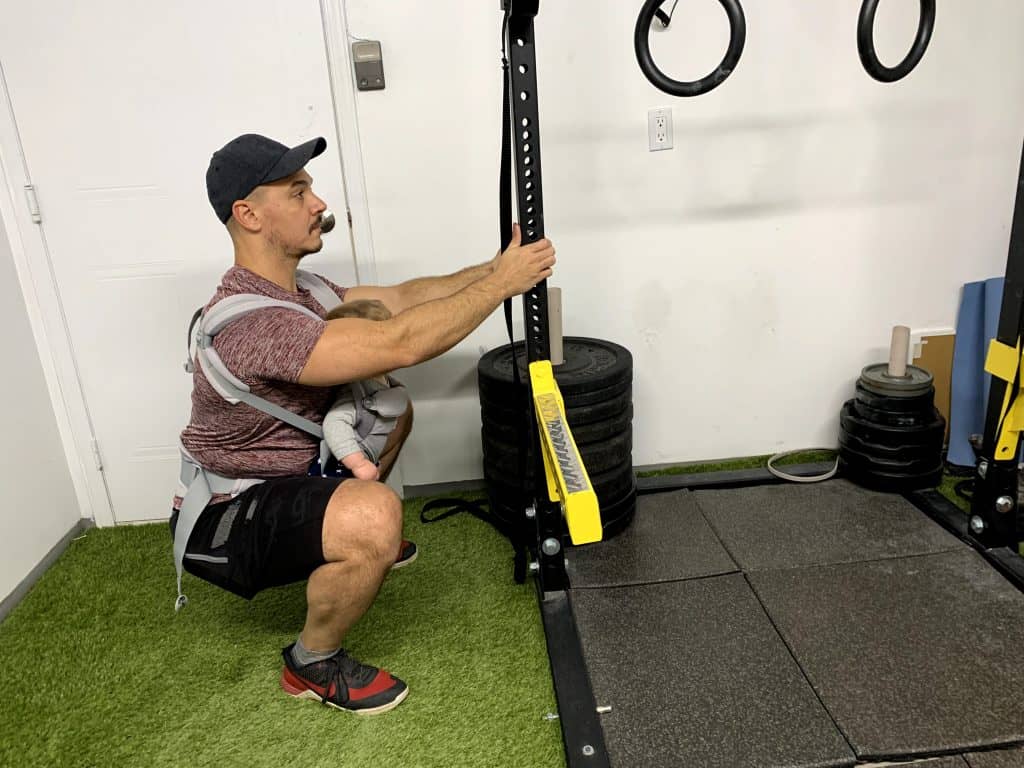
Use a door, door frame, treadmill pole, squat rack or anything that won’t move and you can hold onto as you squat. This also allows for keeping great form and sometime getting more range of motion while staying safe. Keep a good distance from the fixed object to ensure your baby doesn’t touch it in any way. I like to keep my arms fully extended for this variation.
Squat workouts you can do at home while babywearing
Here are some examples of workouts you can do at home while babywearing. All you need is your squat and a timer. Just download any interval timer app on your phone.
Remember to always move slowly and in a controlled fashion, the timer is there for a guideline, and not a reason to go all out and compromise safety.
X Squats Every Minute for 15 Minutes
Advanced: X= ~30 squats per minute
Beginner: X= ~10 to 20 squats per minute
Details:
At the start of every minute do X squats and rest the remaining of that minute, then repeat each subsequent minute.
X: number of squats that you believe you can do comfortably even when tired in less than 45 seconds. Somewhere between 10 and 30 is a good place to start. If you have no clue where to start aim for about 30 seconds of squatting at a comfortable pace during the first few rounds.
TABATA Squats (20 sec of Squats/10 Sec REST)
Set your interval timer to 20s/10s intervals for 8 rounds (4 minutes total). Start the timer and squat for 20 seconds, then rest for 10 seconds and repeat 8 times.
Details:
Tabata is simply an interval pattern of 20s/10s. This is a quick workout but if done right will really tire you out. If you feel you need to go slower because of the babywearing, you can extend the number of rounds as needed.
Your score is your lowest number of squats in 20 seconds!
100 Squats for “time”
Simply do 100 squats with the least amount of resting. You can even try to do this one “unbroken” meaning that you never really stop ?
Do 200 Squats and hold a 10s squat at the start of every minute
Details:
Starting at minute 0, hold a squat for 10 seconds then do as many squats as you can until minute 1. Then hold a squat for 10 seconds and continue until you add up 200 total squats holding a static squat for 10 seconds at the start of every minute.
Feel free to change the total number of squats down or up, to your level. This workout should get very challenging near the end.
Paul is a passionate dad who founded Upside Dad to share his parenting journey with other new parents. He graduated from Concordia University and worked as a test engineer for over a decade. Paul loves dad jokes and craft beer.
Learn more about Paul and Upside Dad here.
